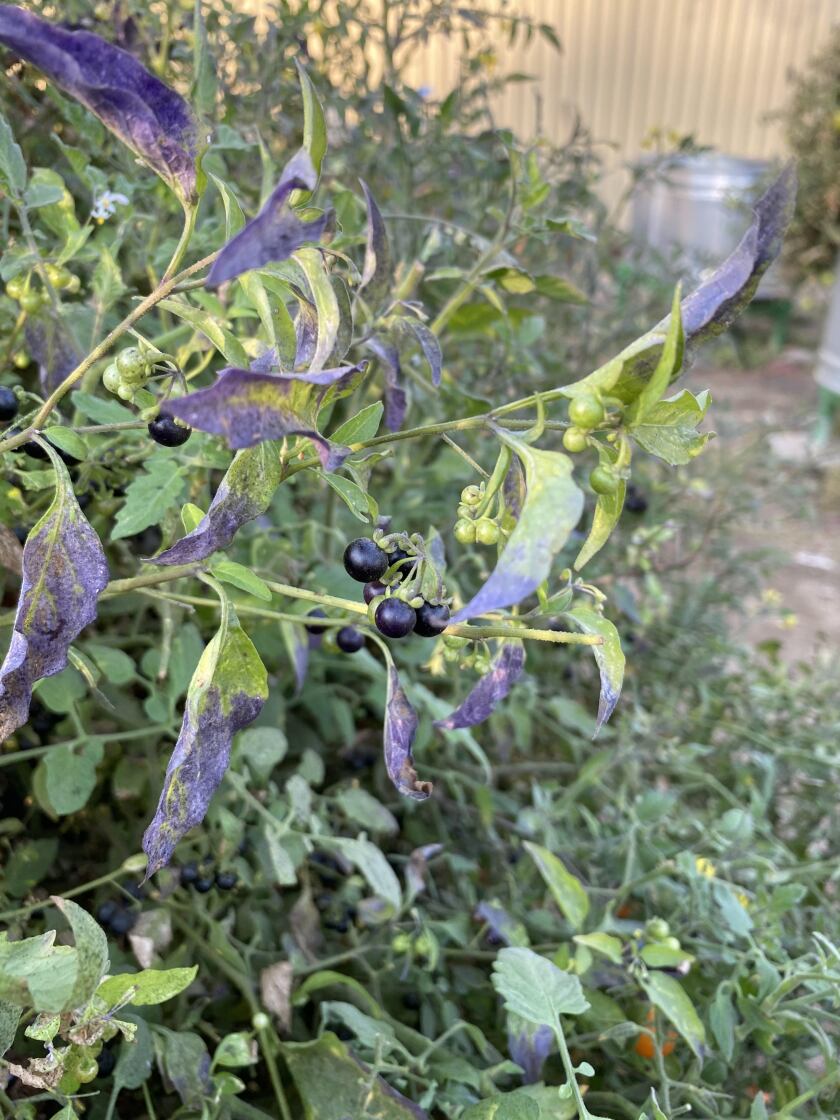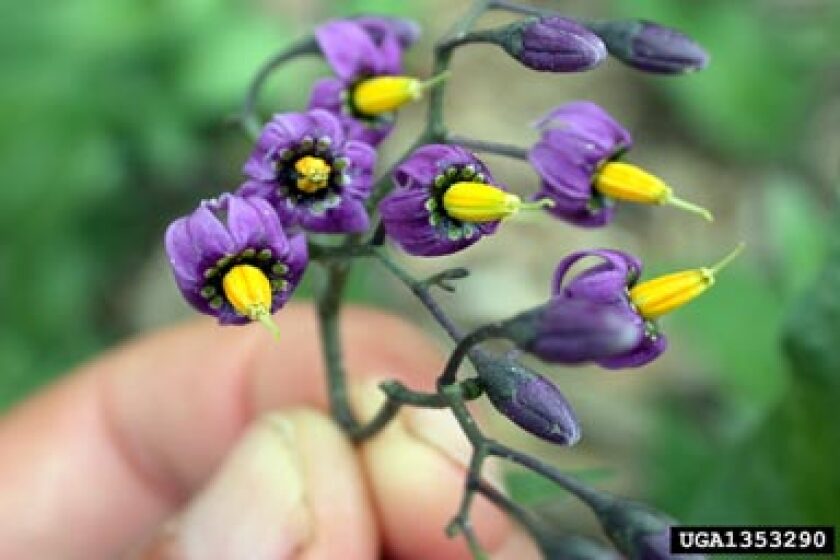Q: Nightshade plants began growing in the same raised bed as tomatoes. Will the nightshade poison the soil in the raised bed? After we dig out the nightshade plants, do we need to replace the soil with fresh soil?

A: It’s hard to be sure exactly what plant you had popping up in your tomato bed. There are lots of nightshades. In fact, tomatoes themselves are a nightshade. But most likely, if it was a weed growing in our region, and it’s something commonly called “deadly nightshade,” it was Solanum dulcamara.
ADVERTISEMENT

Solanum dulcamara has small purple flowers with yellow centers. Eventually, it develops berries which start out green and turn red. When it’s yanked out or broken, it gives off a distinct odor many people find unpleasant. It makes me think of chicory coffee.
Solanum dulcamara is mildly toxic. Eating the berries can cause nausea and diarrhea. Some sources indicate that eating a lot of the berries — like 200 or more of them — might be fatal, but they are not tasty, so it’s unlikely a person would do this. Still, I have seen reports in reputable sources of livestock poisoning, so it’s best to get rid of it if children or pets might come into contact with it. The berries are apparently not toxic to birds, which will eat them and then disperse the seeds to places like your tomato bed.
Soalnum dulcamara is native to Europe but is now widespread in North America.
It can be difficult to eradicate because it breaks when you try to pull it out, and new plants can grow from pieces left behind. It’s better to dig it out than to pull it out. Try to get all of the roots.
But to answer your question: You don’t need to replace your soil.
Your question illustrates the confusion that can be caused by the common names we use for plants. There are many common names for Solanum dulcamara. Wikipedia lists 16 of them, and I have seen even more, including bitter nightshade, bittersweet nightshade, climbing nightshade and European nightshade. I have often heard people call it deadly nightshade, but that name is better applied to a nightshade that doesn’t grow in our region and really is deadly: Atropa belladonna.
Nightshade refers to a large family of plants that includes both Solanum dulcamara and Atropa belladonna, along with petunias, tobacco, and many plants we happily eat, such as eggplants, peppers, potatoes and tomatoes.
ADVERTISEMENT
When potatoes are exposed to light, they can develop toxic levels of the same chemical that makes eating Solanum dulcamara berries a bad idea: solanine. Fortunately, when this happens, potatoes also tend to turn green, warning us to cut away the green parts before eating.
Written by U of M Extension Master Gardeners in St. Louis County. Send questions to features@duluthnews.com.









